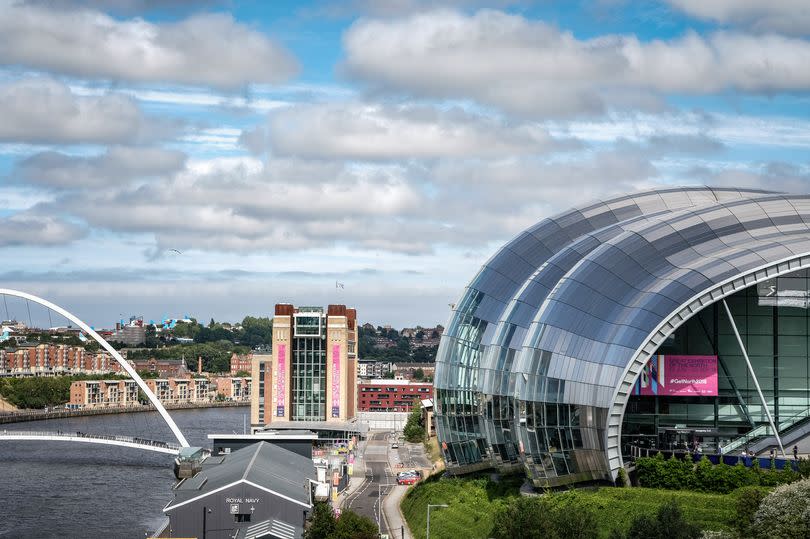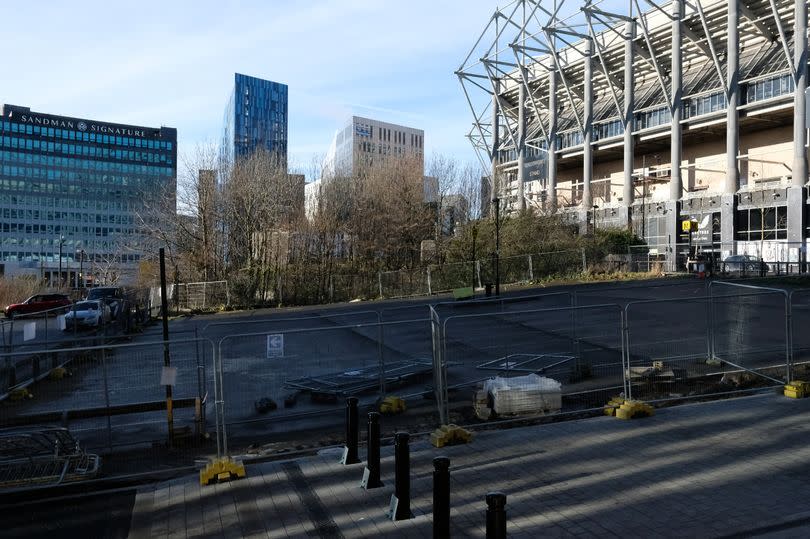Wembley architect thinks Newcastle owners have secured 'special opportunity' for stadium dream
It is not just followers of Newcastle United who are eagerly awaiting the findings of the club's stadium feasibility study. Among those watching on from afar is architect Angus Campbell, who has overseen some of Foster and Partners' most complex projects, including Wembley Stadium and Lusail Stadium, but, also, the Commerzbank, the world’s first ecological office tower, which was the tallest building in Europe when it was built.
Campbell has suggested that the feasibility study will 'define a brief' and the architect hopes there will be a 'best of the best' selection process to enable firms to set out how they would tackle a potential expansion or redevelopment at St James' Park. Given Foster and Partners' background, in infrastructure as much as sporting venues, it is clear that Campbell's pitch would look at 'more than just the stadium'
"We hope to be involved," he told ChronicleLive. "We hope to be invited to put our hat in the ring and show our ideas and our approach, but we would look to reach out to the planners. What are the problems? What does the city need? Because managing a stadium on a match day takes a lot of effort.
READ MORE: Newcastle's 'absolute priority' that could save millions and spare eight-figure FFP nightmare
READ MORE: Newcastle's 'extremely difficult' Sandro Tonali task as ex-detective slams 'keyboard' warriors
"It's important how you engage with the people and the fans. I know as I've been looking at this from afar - thinking how this is going to come to market - there are a lot of people out there with podcasts and very public views on what they think it should be and what they would like it to be for the fans. You have got to keep the heart in there."
That was one of the reasons why the national stadium, for instance, was always going to stay at the same site at Wembley despite the obvious restrictions with the footprint of the old stadium. Campbell spent eight years working on the project - even relocating to a site office within walking distance - to tackle a stadium that was 'falling apart'.
The design team set out to keep some of the 'best bits' of the old Wembley - right down to the orientation of the pitch and the size of the roof opening. FIFA recommends that pitches in the northern hemisphere are orientated north-south so that the shadow falls on the halfway line, but the firm wanted to ensure that Wembley continued to have an east-west orientation to minimise the amount of shadow case on the south side of the stadium. This ultimately led to the construction of the world's longest single spanning arched structure.
The overall stadium was also brought up to modern standards at a time when the sight lines, supporter experience and hospitality requirements had changed dramatically since it was first built a century ago. The old athletics track was removed along with the shallow seating bowl that distanced fans from the game and, although the Twin Towers were ultimately demolished, following extensive public consultation, a design had been tabled that would have incorporated these iconic landmarks into the new Wembley. However, in Campbell's own words, this would have led to the towers becoming 'little pimples in the landscape' rather than the imposing structures they were.
A masterplan was also put together to enhance the local area and make the stadium more accessible. The nearby Wembley Arena's entrance and loading bay were flipped so that the venue and the stadium shared the same route from the nearby tube station and the surrounding area has now become a thriving mixed use development throughout the week rather than just on a match day.
"There are parallels, absolutely, between what's happening at St James' and what happened at Wembley," Campbell said. "Wembley was the national stadium and England's home was at Wembley. I would say, looking at this, you can't move that stadium. St James' belongs in that location. It's unique because it's truly part of the city.
"The site is amazing. Where else can you arrive in the city centre and walk to the stadium in five or 10 minutes? You can also see it from everywhere. Because it's on top of a hill above the rooftops.
"That said, it causes congestion unless you manage it properly and one of the things we find is many of the stadium experts out there have a habit of looking at stadiums where their understanding ends when you go through the turnstiles so it becomes a spectator experience the moment you get inside. Then it's about how much you can earn from the seats and it becomes a commodity when, actually, the big impact is what happens to the city.
"We have done quite a few studies with various clubs because what you find with a football stadium is it's full of facilities for 50, 60, 70,000 seats but then it's locked off when it's not in use and they're locked inside. You might as well have put a big fence around it. There's a shop, but it's not very facilitating. If you could open up the ground floor or terraces of it so on a non-event day it serves outwards, instead of serving inwards, it does both things. It can serve the community."
On that point, as far as Campbell is concerned, anything within a mile of St James' 'should be seen as one because that's like an outdoor concourse'. A nearby project 'lessons were learned from' immediately springs to mind when it comes to these arenas being 'public entities' - and that is the Sage or the the Glasshouse International Centre for Music as it's now known.
"The Sage was a massive project for us," he said. "Think about that project. It was a project where the council was our client. They ran an international competition. They had this idea where they wanted to create a venue on the Quayside.
"The building was not that expensive in the overall scheme of things. It was done on a budget, but what we did was make a big effort to ensure the public could interact with it so that, in effect, there's an internal street.

"You don't need a ticket to go in the building. The facilities are on one side but there are public amenities in the street, and the street became part of the activation with the Baltic and the bridge. That's a community project.
"The people have taken it and it's become an icon they feel very fond of. That's what you want out of these kinds of projects where it's done for the betterment of the area. With the stadium, the owners just need to be careful that they don't alienate the fans and the city by creating something that's too expensive for them all to go to and that's full of facilities for people who are not your average fan."
For Campbell, opening up goes beyond just having a museum or club shop. It is 'smaller venues or things that can happen inside it' and the architect referenced how the recent Miami Open tennis tournament took place inside the home of NFL side the Miami Dolphins.
Campbell sees 'a lot of constraints' on the site at St James', but stressed that will 'create something unique that belongs in the place and responds and is built around the stadium' with the acquisition of land at Strawberry Place providing a 'special opportunity'. A fan zone is currently being built, but this will only have an initial lifespan of three years as the club explores potential long-term uses for the site. Looking from afar, the architect suggested there could be grounds to add another 10,000 seats to the capacity even if it is 'very tight'.

Some of those in the field that Campbell has spoken to have argued the St James' Metro station would need to be closed, but the architect, who is currently working on the Jeddah Metro Transportation Plan in Saudi Arabia, questioned why you would not keep it open if you 'know where to put your columns and where to put the entrance'. So would Campbell offer any broad advice to the club, who have also commissioned a survey to get a range of supporters' views on the future of the stadium?
"Take your time and make sure you go through a proper selection process," he added. "Make sure that you consult the people who have got you to where you got to.
"You now have the backing that might take you to that next level one day, but don't forget the fans. Now is a good time to be talking to the fans and those local communities, consulting them and making sure their requirements are understood.
"You need to be careful that this does not become a transaction where you have got someone thinking, 'I've got to create a match day revenue of X to allow me to buy Y and therefore I need this amount of space'. If they get it right, it will embellish its position in the city and, therefore, you have to bring everyone along with it."

 Yahoo News
Yahoo News 
